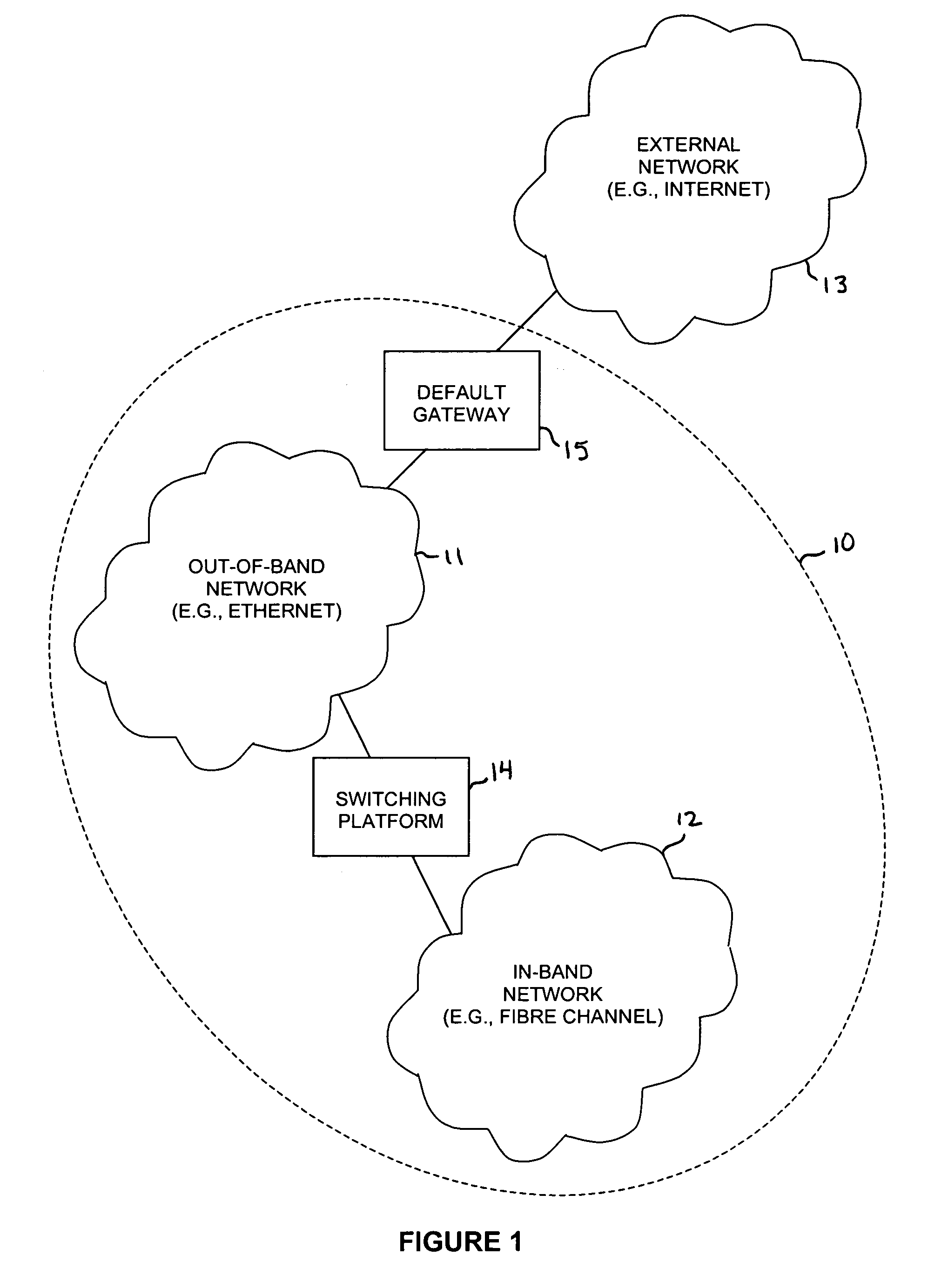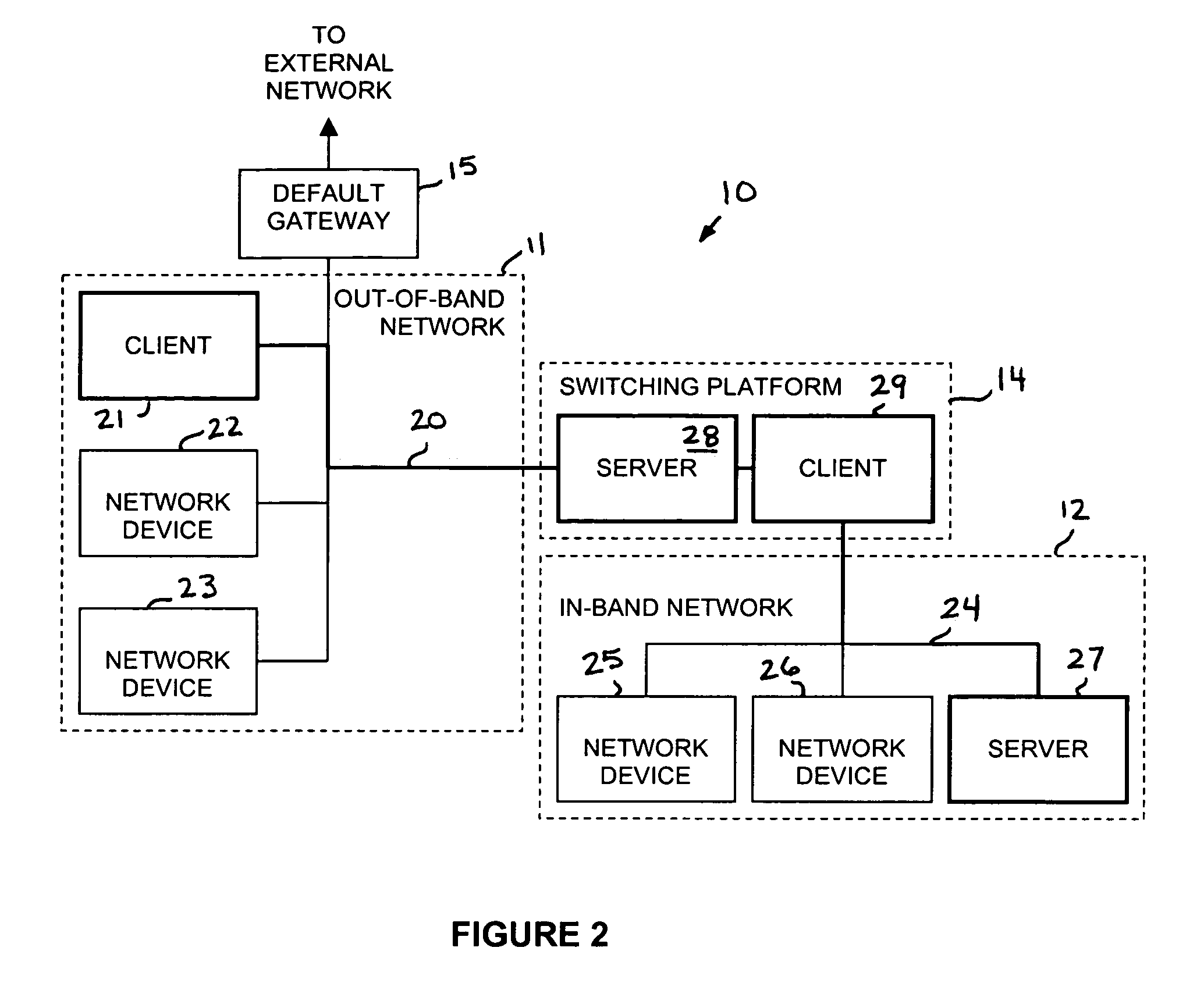Method of routing HTTP and FTP services across heterogeneous networks
a heterogeneous network and service technology, applied in the field of electronic devices, can solve the problems of not being able to publicly access external networks such as the internet, not being able to support particular devices on an esoteric or expensive medium, and not being able to distribute data to devices such as administrators' workstations, so as to simplify the management of devices, eliminate engineering efforts, and simplify the effect of development efforts
- Summary
- Abstract
- Description
- Claims
- Application Information
AI Technical Summary
Benefits of technology
Problems solved by technology
Method used
Image
Examples
Embodiment Construction
[0025]A preferred embodiment of the invention is described below. It should be noted that this and any other embodiments described below are exemplary and are intended to be illustrative of the invention rather than limiting.
[0026]Broadly speaking, the present invention comprises a method and system for routing data across heterogeneous networks. In one embodiment, a switching platform is used to reformulate queries generated by a client on one sub-network and to transmit the reformulated queries to a server on a different, incompatible sub-network. Data generated by the server in response to the queries is transmitted to the switching platform, which reformats the data and transmits it to the client. In a basic embodiment, a client on the first network generates a request for information, wherein the request contains an identifier which indicates that the request is intended for the server on the second network. When the switching platform detects the identifier, the request is ref...
PUM
 Login to View More
Login to View More Abstract
Description
Claims
Application Information
 Login to View More
Login to View More - R&D
- Intellectual Property
- Life Sciences
- Materials
- Tech Scout
- Unparalleled Data Quality
- Higher Quality Content
- 60% Fewer Hallucinations
Browse by: Latest US Patents, China's latest patents, Technical Efficacy Thesaurus, Application Domain, Technology Topic, Popular Technical Reports.
© 2025 PatSnap. All rights reserved.Legal|Privacy policy|Modern Slavery Act Transparency Statement|Sitemap|About US| Contact US: help@patsnap.com



